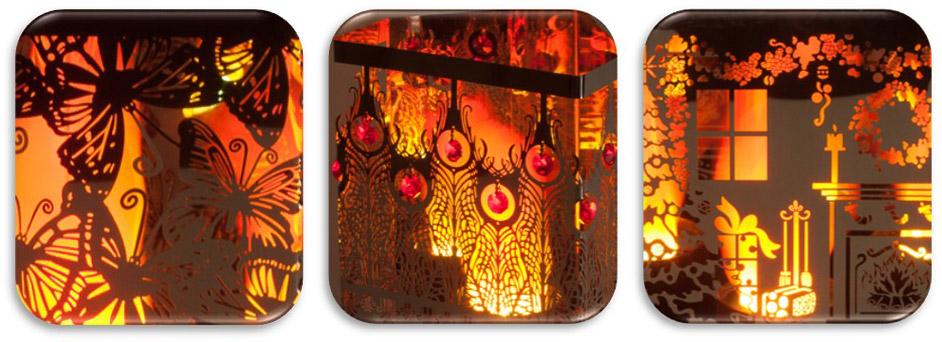A Brief History

THE STORY SO FAR . . . .
Silk flame effect lighting is not a new idea - there are patents go back as long ago as the 1940s, but it seems that it was the arrival of the electric fire in the 1950s that stimulated its development. The new electric fires were much safer but people still wanted to see something flame-like - so the early designs used either turning mechanisms with silk fabric attached to them, or pieces of silk that were flame-shaped and blown around by a fan behind a frosted or partially opaque screen. These silk flames were then illuminated by one or more orange bulbs.
It wasn't until the 1960s that the concept of a simulated fire was re-visited - this time in London’s Theatre land. Stage designers found that they could make an impressive stage effect flame using a large fan housed in a box with a rectangular opening at the top that was surrounded by coloured bulbs, and through which a column of air moved a vertical silk flame around.
The third wave of development came in the 90s with the Nightclub explosion and its need for sophisticated special effects in the pursuit of exciting visual entertainment. The Club lighting designers re-used the large theatre flamelights (with flames up to 2m in height) but designed of a number of exotic wall and ceiling flamelights, in addition to floor and pillar mounted plug-in designs.
The 21st Century has seen a number of technological improvements and innovations that meant that flame-effect lighting could be brought to the domestic market. For home decoration and atmospheric lighting, the flamelight console had to be significantly reduced in size and in noise output - not a problem in nightclubs but unacceptable in the home. The abundance of quiet, reliable and, above all, small computer fans made the domestic market a possibility and it was London special effects lighting designers who put this theory into practice for the first time. Their motivation was to find a way of bringing back to life all the unused fireplaces that are the focal point in almost every British living room - unused due to the fact that central heating is so efficient and inexpensive. Thus the Luxa ‘Firelamp’ was born.
There were a number of spin-off uses of a small artificial flame machine - their size meant that they could be used for in-store visual merchandising in fire product, such as chimeneas, fire-pits and barbecues. The Firelamp could also be housed inside a hugely varied number of lampshade designs and materials to produce table lamps with a very realistic flame inside. Like the Lava Lamp before it, the new silk flame lamps give a beautiful combination of light, colour and movement.
